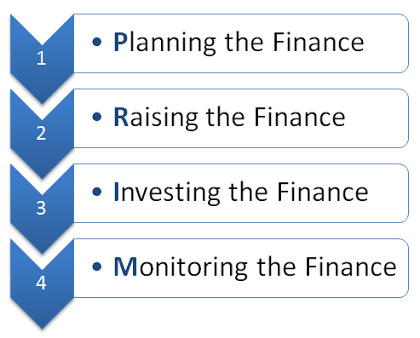
Corporate Finance Theory
The very general meaning of CORPORATE FINANCE is “Financial activities in association with running a business”.
The questions answered by Corporate Finance are decision-making about capital, finding the sources of capital, decisions regarding payment of dividends, and Finance in Mergers and Acquisitions processes of the corporate finance companies.
Corporate finance theory includes planning, raising, investing, and monitoring finance to achieve the company’s financial objectives.
Transactions Involved in Corporate Finance Theory
- Raising seed, startup, expansion, or development capital.
- Mergers, demergers, acquisitions, or the sale of private companies
- Mergers, demergers, takeovers of public companies
- Raising capital via the issue of other forms of equity, debt, and related securities for the refinancing and restructuring of businesses
- Financing joint ventures, project finance, infrastructure finance, public-private partnerships
- Raising debt and restructuring debt, especially when linked to the types of transactions listed above
Skeleton of Corporate Finance Theory and Practice
Capital Budgeting (Investment analysis)
- The “capital” refers to long-term assets.
- The “budget” is a plan which details projected cash inflows and outflows during the future period.
When a firm is in a plan to make long-term investments for different purposes like replacing old machinery, buying new machinery, investing in new plants, developing new products, research, and developments, it needs to do an analysis of whether these projects are worth funding cash through the firm’s capital structure. Hence, this entire process of analysis is Capital Budgeting. The capitalization structure may include debt, equity, and retained earnings.
Maximizing Shareholder Value

With the resources and surplus cash, managers can invest these for company expansion. So, managers must do a proper analysis to determine the appropriate allocation of the firm’s capital resources and cash surplus between projects and payment of dividends to the shareholders.
Return on Investment
Whenever we invest in the projector in terms of cash, the purpose behind it is to earn that investment. In corporate finance theory, the same concept applies to investing in some asset such that it will yield an appreciation of value to the organization. Return on investment is useful to measure the return earned compared to the capital invested.
Leveraged Buyout
In terms of Mergers and Acquisitions, LBO is a very commonly useful concept. LBOs can have many forms: Management Buy-Out(MBO), Management Buy-In (MBI), Secondary Buyout, and Tertiary Buyout.
Growth Stock
As the name suggests, a growth stock of a company generates significant positive cash flow, and its revenues are expected to increase more rapidly than the companies from the same industry.
Efficient-Market Hypothesis
The general meaning of this Efficient Market Hypothesis is” the financial markets are efficient in terms of information”. The three major forms of this hypothesis are: “weak”, “semi-strong”, and “strong”.
The weak form titles that prices on traded assets reflect all past publicly available information. The semi-strong form reflects all publicly available information, and prices instantly change to reflect the new public information. Strong form claims that the prices instantly reflect even hidden information.
Recommended Courses
- Bank Branch Audit Course
- Investment Management Program
- Certification Training in Advanced Technical Analysis
- Online Course on the Art of Trading in the Stock Market
Capital Structure
The firm can use the self-generated fund as capital or go for external funding obtained by the issue of debt and equity. Debt financing, of course, comes with an obligation to be made through cash flows regardless of the project’s level of success. Whereas equity financing is less risky with respect to cash flow payments but has a consideration in the organization’s ownership, control, and earnings. Management should use an optimal mix of capital structure with due consideration to the timing and cash flow.
Working Capital
The corporation needs to manage its working capital to sustain ongoing business operations. Working capital is the subtraction of current liabilities from current assets. Working capital is measured through the difference between cash or readily convertible into cash (Current Assets) and cash requirements (Current Liabilities).
Assets
Assets on a Balance sheet are classified as current and long-term assets. The duration for certain assets and liabilities a firm has is very useful.
Bank Loans
Depending on the loan’s duration, the bank loan is classified as a short-term(one year or less) loan or a long-term(known as a term) loan.
Which are the Sources of Capital?
 Debt Capital
Debt Capital
Debt can be through bank loans, notes payable, or bonds to the public. A Debt through Bonds requires an organization to make regular interest payments on the borrowed capital until its maturity date, after which it must be paid back in full. In some cases, if corporations cannot make the interest expenses through cash payments, the firm may also use collateral assets to repay their debt obligations.
Equity Capital
A company can raise capital by selling shares in the stock market. Thus, investors or shareholders buy the shares hoping to get an appropriate return (dividends and an increase in shareholders’ value) from the company. Thus, investors invest only in those corporate finance companies that have positive earnings.
Preferred Stock
It’s a combination of properties, not equity and debt instruments. These stocks do not carry voting rights but have priority over common stock in terms of dividend payments and asset allocation at the time of liquidation.
Cost of Capital
It is the rate of return realized to satisfy investors. The cost of debt is the return by the investors who invest in the firm’s debt. The cost of debt is largely related to the interest the firm pays on its debt. Whereas the cost of equity is calculated as follows:
The return from the project must be greater than the project’s cost for it to be acceptable.
The weighted average cost of capital (WACC) is the weighted average cost of the component costs of debt, preferred stock, and common stock or equity. It is also referred to as the marginal cost of capital (MCC), which is the cost of obtaining another dollar of new capital.
WACC = E/V*Re+D/V*Rd(1-Tc)
Where:
Re = cost of equity
Rd = cost of debt
E = market value of the firm’s equity
D = market value of the firm’s debt
V = E + D
E/V = percentage of financing that is equity
D/V = percentage of financing that is debt
Tc = corporate tax rate
Investment and Project Valuation
The project’s value is estimated using a Discounted Cash Flow (DCF) valuation, and the highest Net Present Value (NPV) project will be selected. In order to determine this, we measure the cash flows from the project and then discount them to find their present value. The summation of these present values is NPV.
Other measures include discounted payback period, IRR, ROI, Residual Income Valuation, and MVA / EVA.
Revenue, Expenses, and Inventory
An organization’s income is the result of subtracting expenses from its revenue.
Not all the costs are expenses. Accounting standards specify which costs should be allocated to the income statement as expenses and which costs should be allocated to the inventory account, appearing as assets on the balance sheet.
Financial Ratios
Certain financial ratios are very helpful in evaluating a firm’s performance. These ratios are useful to measure the following:
- Leverage
- Profitability
- Turnover rates
- Return on Investments
- Liquidity
Cash Cycle
The time between the date of inventory payment (or raw materials) and the date of cash collection from the sale of the inventory is the Cash cycle.
The corporate finance formula for calculating the cash cycle is as follows:
As the cash cycle affects the need for financing, it is very important from a corporate point of view.
Dividend Policy
Payment of the dividend is mainly related to the dividend policy, which is based on the financial policy of the company. The company issues the amount from its excess cash after paying all dues in all matters regarding the issue of dividends. If the company has surplus cash and it is not necessary for the business, in that case, a company can think about payment of some or all of the surplus earnings in the form of dividends.
Sustainable Growth
The company’s Sustainable Growth rate results from multiplying the ROE by the earnings retention rate.
Risk Premiums
As we know, a firm can face business, Financial, and Total corporate risks.
Business Risk: This risk is associated with a firm’s operations. A measure of business risk is the asset beta, also known as unleveled beta.
Financial Risk: This risk is associated with the firm’s capital structure. It is affected by the firm’s financing decision.
Total Corporate Risk: This is the sum of Business and Financial risks, measured by the equity beta, also called levered beta.
Share Buyback
Sometimes, a firm has extra cash so that it may buy back some of its outstanding shares. This eventually has an added advantage, as a firm has its information, which the market doesn’t have. Therefore, a share buyback could signal that the share price has the potential to rise at above-average rates.
Companies may merge based on some financial or nonfinancial (expansion) reasons. The target firm acquired so that synergies from the merger will surpass the price premium.
How is Corporate Finance Associated with Other Areas of Finance?
Corporate Finance theory encompasses the activities and methodical aspects of a company’s finances and capital.
In the area of Investment banking, the transactions in which capital is raised for the organization include:
- Seed capital, startup.
- Mergers and Demergers of the companies.
- Management Buyout (MBOs), Leveraged Buyouts (LBOs)
- Capital raising through equity, debt
- Restructuring the business
Financial Risk Management
Risk management has a very important role in every aspect of a business. Financial risk management is related to managing corporate value in the event of adversarial changes in stock prices, commodity prices, exchange rates, and interest rates.
Recommended Articles
This has been a guide to Corporate Finance Theory and practice. Here, we discussed the Planning, Transactions, Skeleton, Source of capital, and how it associates with the other finance companies, etc. You may also learn more about corporate finance theory and practice from the following articles-

 Debt Capital
Debt Capital
